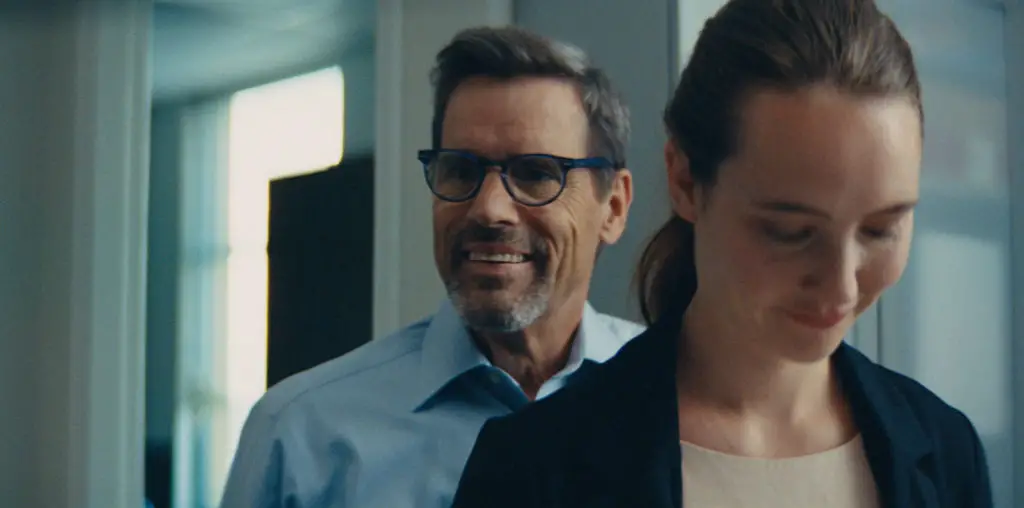
Emil Jannings has sure gotten some bad press lately. In the like-it-or-not juggernaut “Inglourious Basterds,” the great German actor appears as a friend of the Third Reich when attending a certain film premiere in Paris. The fact is all too true, since Jannings accepted the role of “Artist of the State” and starred in propaganda such as “Führerprinzip: Der Herrscher” (“The Ruler” 1937). His run of Nazi films makes for a regretful footnote to a brilliant career. According to tradition, in 1945 Jannings greeted Allied troops by holding out his Oscar – he’d won two before working for the Nazis – to save himself.
But thankfully, the great Jannings lives on through his best screen work. Beloved by a society during Germany’s Weimar era, he made some of his best work for another great, a filmmaker whose name alone rings of legendary grandeur.
Even the most passionate lover of cinema couldn’t dream up an origin myth better than F.W. Murnau. One could name Sergei Eisenstein or Fritz Lang, but, as with Murnau, history has already claimed them. While D.W. Griffith did much to construct the narrative film by honing it for realism and clarity, the dreamers across the Atlantic expanded the medium’s possibilities by opening it up for symbol and metaphor. The journey’s end for both traditions, and a triumphant moment in film history, was when silent cinema had become perfected, just before the arrival of sound that would hurl filmmaking into a revolution. The silent masterworks include the comic brilliance of Chaplin’s “The Circus” and “City Lights,” Lon Chaney’s visceral pantomime in Tod Browning’s “The Unknown,” and Murnau’s masterwork “Sunrise,” which at once maximizes the narrative impact of film while filling it with visual innovation, even if the story about a man’s temptation by the city breeds continual melodrama (a cross that the silent screen always had to bear). Just when the visual style seems at rest, Murnau ignites another breathtaking composition, the camera placement and movement reaching beyond other filmmakers’ limitations.
All great silent films are discussed more than viewed, and hence, more idealized and mythical in our collective memory. We need to gather patience for a sitting of a silent feature, but the greats make us wonder why we don’t devote more time to them. Murnau’s career is filled with such moments, many of which appear in Kino Video’s new box set, released earlier this year. Only one film in this set, “The Finances of the Grand Duke,” lives on as an odd curio, animated pop-art history that has dated. The rest contains the kind of wonderment that only the seventh art could produce.
The most frequently discussed – and lacking Jannings – “Nosferatu” is clouded by myth more than any of Murnau’s works; this due to the fact that the film singlehandedly launched the cinematic vampire myth. We should thank the fates for being able to view it today in the first place. Murnau adapted Stoker’s Dracula without buying the rights from the author’s widow, a move that ruled the film stolen property and the prints to be confiscated from the German UFA Studios and destroyed. Thankfully, prints survived, one of which was received by Universal Studios after it purchased the rights to film the novel of Dracula. The film was originally to star Lon Chaney before he succumbed to cancer; it was then given to the Hungarian-born actor Bela Lugosi, who played the count on stage and would, on screen, solidify the dominant trend in vampire iconography.
To view “Nosferatu” is to leap backward over the gigantic Lugosi and his tradition; it’s a viewing experience quite worth the jump. Essentially a family melodrama disrupted by the most diabolical of threats, the film is full of melodramatics. The chest heaving and villainous imagery of the vampire Count Orlock (whose speedy approach in an overcranked camera looks more like slapstick than menace) leave many to dismiss the film, including Film Threat’s own Phil Hall. Murnau fashions an ideal relationship between Hutter and wife Ellen to serve targets for the infectious vampirism of Count Orlock, who summons Hutter to the Carpathian Mountains to purchase a home in Germany (taking the place of London in the novel). The pre-Lugosi vampire Orlock is imposingly tall yet vermin-like, with rats’ teeth and ears and long limbs to reach out and snuff virtue. Not specifically tapping into the source novel’s sexuality – but certainly not oblivious to it – Murnau shows more interest in the plague metaphor behind the eastern-borne vampire (and perhaps tripping across anti-semitism, as Michael Bronski has noted in Cineaste, Summer 2008). The monster appears like the species that carried the blood-transporting ticks – as, essentially, the transmitter of sure death.
Yet Orlock’s descent upon Ellen does suggest the vampire’s ravage of women as a dark rapture. In the lighting style of the German Expressionist movement, the shadow of Orlock’s hand reaches over Ellen’s chest to bind into a fist and do the same to her spirit. She is a potential sacrifice to bait the vampire, so to trap him in the approaching daylight and cause his demise. Orlock’s curse is so strong that we can’t help wonder if the 1920s audience’s thirst for justice snuffed out the real ending: Orlock’s triumph by casting a pall over an entire city.
As strange as it is, “Nosteratu” is just too familiar for viewers to approach it fresh, which the film needs for us to enjoy it. Murnau’s similarly themed, little-seen, but just as grand take on the Faust myth has this privilege. In “Faust” (1926), the filmmaker abandons the minimalist scenes of “Nosteratu” for a mythical scope. Looming in the beyond, an Angel and Mephisto (a maniacally grand Jannings) bet on who can win control over Faust, the winner taking all – i.e., control over Earth. Darkness falls as Mephisto unleashes a plague, leaving the scholarly title character attempting to cure it. The plague’s devastation causes Faust to call to the devil for a cure, whence appears Mephisto at his service. As the legend goes, Faust takes the deal, all the more convinced when Jannings’ demon shapeshifts into a benign figure and cures a sick man. To make Faust spread evil, Mephisto temps him with youth, and Murnau’s dissolve of Faust transforming to a younger self was doubtlessly breathtaking for its time. Throughout, Murnau casts aside any inclination toward realism and creates a shifting phantasmagoria: transportation at Mephisto’s – and Murnau’s – whim, a topless Helen of Troy, the world spinning as a magical ride at the behest of evil. The film never ceases its invention and plays as a high-speed jaunt through visual granduer.
In “Tartuffe” (1925), Murnau again taps into the mythical by adapting the classic French play by Moliere. The hypocrite to end all hypocracy, i.e., the title character, does not appear in the narrative proper, a framing story about a miserly female caretaker who positions herself to steal the inheritance of her elderly charge. When his son returns and realizes the situation, he masks himself as a carnivalesque showman to screen a film version of the French play – a film-within-a-film device with hints of “The Mousetrap” in Hamlet but here the main attraction. In the narrative within the film, Emil Jannings plays Tartuffe as a squinted-eye sneerer, comical in a different way than the jest-filled stage role. With his Ben Franklin hair and moralizing posture, Jannings steps imposingly, looking just past the pocket scripture he holds inches away from his face. Honored by Orgon, Tartuffe steals advances towards the man’s wife in his own home. She’s wise to him, but knows Orgon to be too distracted by Tartuffe’s pious facade. Hence, she traps the miser in the act, thus fashioning a revised version of Hutter’s device to defeat Count Orlock. As the filmed morality play ends, the housekeeper is revealed; the banishment is served by children in the streets who brand her as “Tarfuffe!” with pointing fingers. Murnau wraps his play-within-another-morality-play by commenting on the new medium’s power to instruct as well as entertain.
While Jannings offers a pleasing diversion in “Tartuffe,” his masterwork is “The Last Laugh” (1924), a simple drama that disregards epic flourish to expand the pathos of its central player. Jannings is the doorman of a class-A Berlin hotel. His age and wear creates a liability but has added to his presence as the face of the establishment. He takes the stature home to his working-class neighborhood, where he is an inspiration to his neighbors. When his younger, sniveling boss demotes him to washroom clerk, Murnau’s universe spirals into expressionist doom – the film’s frame darkens along with Janning’s crestfallenness. Yet Murnau’s sure eye comes in secondary to Janning’s haunting performance, beginning as a stout workman and descending into a shriveled shell, leaning towards his eventual grave in the washroom. Murnau’s famous rescue-the-character epilogue – and source for the title – is neither earned nor bought fairly. But with Jannings performance we accept Murnau’s wishfulfillment as fine poetic justice.
“The Haunted Castle,” one of the two remaining features, is a worthy if undistinguished gothic yarn, while “Finances of the Grand Duke” is the odd duck. A melodrama with some adventure, the film does little more than show us the strange paths the silent medium could take. Of more value is the set’s sizable collection of featurettes, about one per disc (each film is available as a standalone DVD from Kino). The enthusiast will savor each, while the casually curious can pick and choose for various reward. Both types will leave with essential cultural history under their belts.

